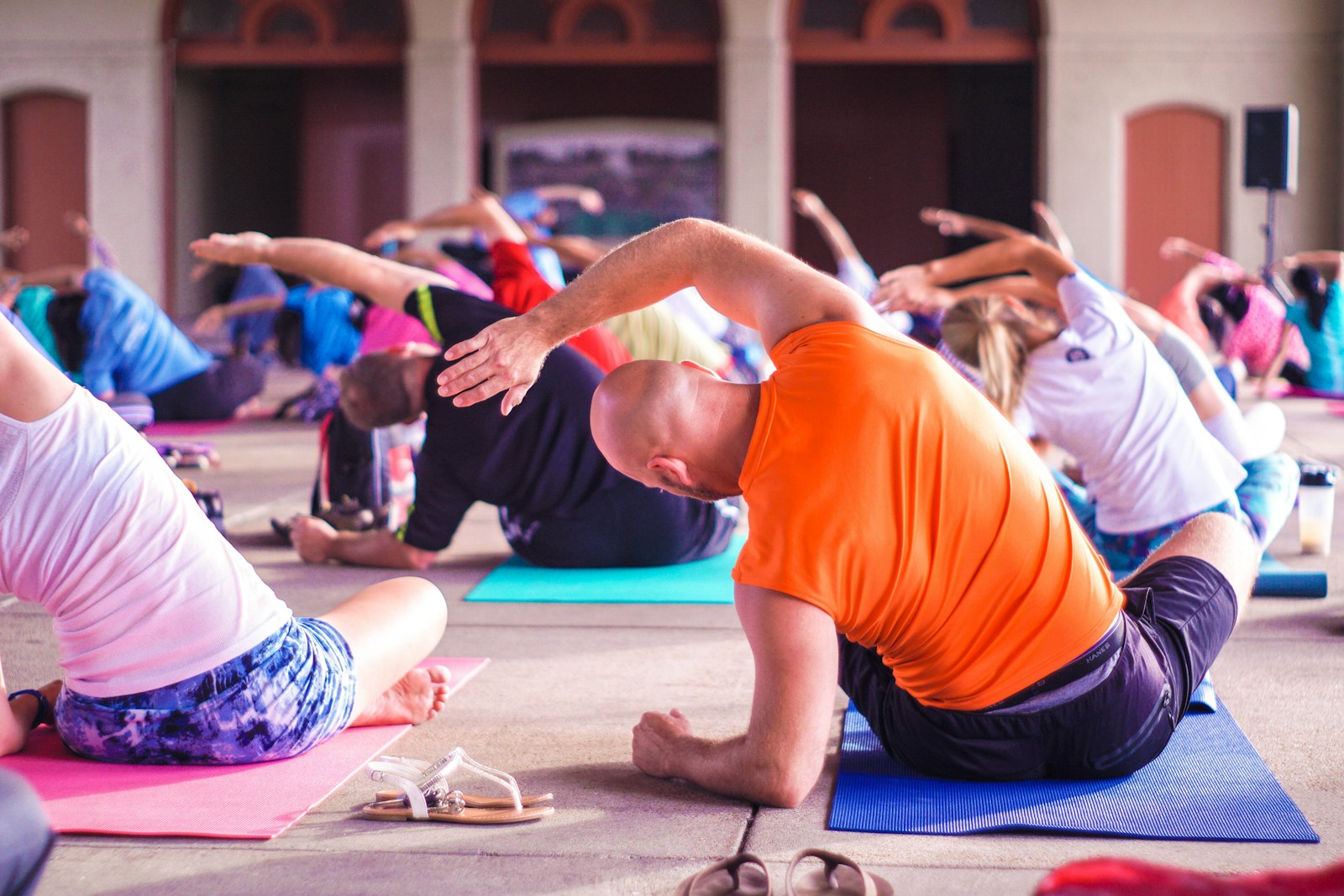Navigating the path to recovery following a coccygectomy, the surgical removal of the coccyx or tailbone, can be a complex process warranting expert guidance. One crucial element of this journey is the incorporation of exercises specifically designed to aid in the healing and strengthening of the affected area. This discourse will shed light on a variety of exercises—from gentle stretches to Pilates and low-impact aerobic activities—commended by experts for their effectiveness in coccygectomy recovery. Please join us as we explore these options and discuss how they can be integrated into a comprehensive, manageable recovery plan.
Understanding Coccygectomy Recovery
A patient’s journey towards full recovery post-coccygectomy, a surgical removal of the tailbone, involves understanding the critical aspects of healing, physical therapy, and lifestyle modifications. This process can be complex, as it encompasses both physical and psychological factors.
The rate of recovery can be influenced by a variety of factors, including the patient’s overall health, the success of the surgery, and the patient’s commitment to the recommended physical therapy regime. It’s important to note that while coccygectomy often provides significant relief from coccydynia, it carries its own set of complication risks. These may include infection, excessive bleeding, nerve damage, and bowel or bladder issues.
The psychological impact post-surgery also cannot be underestimated. A patient may experience feelings of anxiety or depression due to the perceived loss of mobility or independence, or due to the physical discomfort associated with the healing process. Therefore, it is crucial that patients receive adequate psychological support in addition to the physical care they receive. The road to recovery post-coccygectomy may be challenging, but with comprehensive care and a thorough understanding of the recovery process, patients can successfully navigate this journey towards improved health.
Importance of Post-Surgery Exercises
The role of post-surgery exercises in the recovery process following a coccygectomy cannot be overstated. These exercises, particularly those included in a carefully structured rehabilitation program, offer numerous benefits in promoting healing, restoring function, and enhancing overall quality of life. It is therefore essential to understand the guidelines for these exercises to optimize post-coccygectomy recovery outcomes.
Benefits of Rehab Exercises
Engaging in rehabilitative exercises after a coccygectomy not only accelerates the healing process but also plays a crucial role in regaining strength and flexibility in the affected area. Let’s delve into the benefits of these exercises:
- Rehabilitation Equipment Usage: The appropriate use of equipment such as exercise balls or resistance bands can greatly enhance the efficiency of rehab exercises, facilitating a smoother recovery journey.
- Physical Improvement: Regular exercises aid in restoring mobility, enhancing muscular strength, and reducing the likelihood of post-operative complications.
- Emotional Benefits of Exercise: Exercise can also have a positive effect on your mental health. It can help reduce anxiety, depression and improve the overall mood, making the recovery process more bearable.
Remember that each patient’s recovery journey is unique and requires a personalized approach.
Post-Coccygectomy Exercise Guidelines
As we explore the critical role of post-surgery exercises, it’s important to note that these guidelines are not merely suggestions but essential steps towards a successful recovery after a coccygectomy. Exercise modifications and pain management are two key components of these guidelines. Modifying exercises to match the patient’s current physical condition allows for gradual progression, decreasing the likelihood of further discomfort or injury. Pain management, meanwhile, is vital in ensuring that the patient can perform exercises without unnecessary strain. This could involve pharmacological measures or alternative methods such as heat or cold therapy. Adherence to these guidelines aids in improving mobility, strength, and overall quality of life post-surgery. Remember, recovery is a journey that requires patience, perseverance, and proper guidance.
Starting With Gentle Stretches
As we transition to the topic of ‘Starting With Gentle Stretches’, we will explore the significance of these exercises in the coccygectomy recovery process. We will provide a list of recommended stretches, ensuring they are gentle enough not to strain the recovering area. Additionally, we will provide guidance on how to handle any discomfort that may arise post-stretching, to facilitate a smooth and efficient recovery journey.
Understanding Gentle Stretch Importance
Initiating one’s recovery journey with gentle stretches post coccygectomy can play a significant role in enhancing mobility, reducing pain, and encouraging the healing process.
Understanding the importance of gentle stretches is crucial in ensuring a smooth recovery. Here’s why:
- Pain management: Gentle stretches can help alleviate discomfort. They promote blood circulation, which aids in pain reduction and the healing process.
- Enhanced mobility: Regular stretching improves joint flexibility and movement range, leading to better mobility.
- Stretching frequency: Frequent, gentle stretching is beneficial. It helps to maintain muscle flexibility, prevents stiffness, and aids in faster recovery.
Therefore, incorporating gentle stretches into your recovery routine can greatly improve your overall well-being post coccygectomy.
Recommended Stretching Exercises
Now, let us explore some recommended stretching exercises, beginning with gentle stretches, which can significantly aid in your post-coccygectomy recovery process. It’s crucial to adhere strictly to exercise precautions to avoid exacerbating your condition. Start with pelvic tilts; lying flat on your back, gently tilt your pelvis upward, hold for a few seconds and release. Proceed with knee-to-chest stretches; still lying flat, bend one knee and slowly pull it towards your chest.
To maintain injury avoidance, never force a stretch – it should feel like a gentle pull, not a painful strain. The seated hamstring stretch is also beneficial; while seated, extend one leg and reach towards your toes, keeping the other leg bent. Remember, consistency is key in these exercises for optimal recovery.
Managing Post-Stretch Discomfort
Navigating the realm of post-stretch discomfort is an integral part of the coccygectomy recovery process, especially when initiating with gentle stretches. To effectively manage this discomfort and aid in emotional healing post surgery, consider the following pain management techniques:
- Heat and Cold Therapy: Alternating between heat and cold can alleviate post-stretch discomfort. Heat relaxes muscles, while cold reduces inflammation.
- Mild Over-the-Counter Pain Relievers: Non-prescription medications can be beneficial. However, always consult your healthcare provider before starting any new medication.
- Mindfulness and Relaxation Techniques: Practices like deep breathing and progressive muscle relaxation can reduce pain intensity and promote emotional healing.
Lower Back Strengthening Exercises
In the aftermath of a coccygectomy, incorporating lower back strengthening exercises into your recovery regimen can significantly help improve mobility and reduce discomfort. Focusing on core stability and pelvic floor exercises can prove highly beneficial.
Core stability is crucial for maintaining proper posture and reducing strain on the spine. Simple exercises like the bridge pose or bird dog can strengthen the muscles surrounding the lower back and abdomen, thus promoting core stability. These exercises, when performed correctly, engage the muscles in the lower back, hips, and abdomen, which are essential for supporting the spine.
Pelvic floor exercises, also known as Kegel exercises, are equally important. These exercises target the muscles that support the bladder, bowel, and uterus. Strengthening these muscles can help alleviate lower back pain, improve bladder control, and enhance sexual function.
However, it is essential to carry out these exercises under the guidance of a physical therapist to ensure correct form and prevent injury. Additionally, it is crucial to listen to your body and not push beyond your comfort level. Remember, recovery is not a race; it is a journey that requires patience and perseverance.
Incorporating Pilates Into Recovery
Incorporating Pilates into the recovery process after a coccygectomy can have significant benefits. These low-impact exercises can help strengthen the body, improve flexibility, and promote overall wellness. However, it is important to tailor the Pilates routine to the specific needs and limitations of the individual recovering from the surgery.
Benefits of Pilates Post-Coccygectomy
Why is Pilates an excellent choice for post-coccygectomy recovery? The answer lies in its focus on core strength, flexibility, and balance, all of which are crucial for a successful recovery process. The benefits of incorporating Pilates into your recovery regime are manifold:
- Pilates equipment usage: The reformer, a primary tool in Pilates, allows for low-impact exercises that can be tailored to your individual needs and comfort level, promoting strength and flexibility without straining the healing area.
- Mental wellness through Pilates: By focusing on controlled, mindful movements, Pilates not only strengthens the body but also the mind, reducing stress and promoting a positive mind-body connection.
- Improved posture: Regular Pilates sessions help in correcting posture, thus alleviating pressure on the coccyx area and facilitating faster recovery.
Tailoring Pilates for Recovery
To optimize your post-coccygectomy recovery using Pilates, it’s crucial to tailor the exercise regimen to your specific needs and healing progress. Pilates equipment usage can be adjusted to match your comfort level and physical capabilities. Reformers, for example, can be set at lower resistance settings initially and gradually increased as your strength improves. Modified matwork techniques can be incorporated, focusing on slow, controlled movements that stabilize the core while minimizing strain on the healing area. These modifications can help accommodate post-surgery physical limitations, reducing the risk of exacerbating the injury. With the guidance of a trained Pilates instructor familiar with coccygectomy recovery, this tailored approach can yield significant benefits, promoting a safe, effective, and comprehensive rehabilitation journey.
Yoga Poses for Coccygectomy Recovery
Exploring various yoga poses can significantly aid in the recovery process after a coccygectomy, offering gentle stretches that can help alleviate pain and promote healing. With the right yoga gear suggestions, one can create a comfortable and effective practice environment, while also reaping the emotional benefits of yoga, such as reduced stress and improved mood.
- Child’s Pose (Balasana): This restful pose helps stretch the hips, thighs, and ankles while reducing stress and fatigue. It’s an excellent pose for coccygectomy recovery as it allows for gentle stretching without straining the coccyx area.
- Cat-Cow Pose (Marjaryasana-Bitilasana): This pose offers a gentle way to warm up the spine and stretch the back, torso and neck. It’s especially beneficial for spinal mobility, which is crucial after a coccygectomy.
- Corpse Pose (Savasana): While it may seem simple, this pose is powerful for mind-body relaxation. It aids in reducing anxiety, promoting a restful sleep, and can be a significant part of pain management.
Walking as a Recovery Exercise
Incorporating regular walking into your recovery plan post-coccygectomy can significantly enhance the healing process, as it gently stimulates blood flow and encourages mobility without adding undue stress on the coccyx area. This low-impact exercise can be tailored to your individual recovery pace and comfort level, allowing for gradual increases in distance and pace as your strength and mobility improve.
Recovery footwear plays a crucial role in ensuring safety and comfort while walking. Proper shoes can provide the necessary support and cushioning, reducing the pressure on your lower back and coccyx. It’s recommended to consult with a healthcare professional or a footwear expert to choose the right type of shoes that offer adequate support and shock absorption.
Outdoor walking, in particular, offers the added benefit of fresh air and a change of scenery, which can greatly enhance your overall sense of well-being and positivity during recovery. However, it’s important to choose flat, even surfaces to prevent any potential falls or injuries. Always remember to maintain a good posture while walking and avoid over-exertion. Implementing walking into your recovery plan will not only aid physical healing but also provide mental health benefits associated with regular exercise.
Swimming: A Low-Impact Option
Another beneficial, low-impact exercise to consider during coccygectomy recovery is swimming, which offers a host of advantages for enhancing physical healing and promoting overall well-being. This activity harnesses the natural resistance provided by water to gently strengthen muscles without adding undue stress to the healing coccyx region.
Here are three key aspects to consider when incorporating swimming into your recovery routine:
1. Water Resistance Benefits: Water provides natural resistance that can be utilized to strengthen the muscles surrounding the coccyx, assisting in a faster recovery period. As you move through the water, your muscles work harder than they would on land, promoting strength development without the impact to your joints.
2. Swimming Technique Adjustments: To prevent further injury, it is crucial to adjust your swimming technique. Consider using a flotation device and focusing on upper body strokes to minimize strain on the lower back.
3. Supervised Activity: Always ensure that your swimming sessions are supervised by an experienced professional. They can monitor your technique and provide feedback to ensure you are not inadvertently causing additional strain on your healing coccyx.
Expert-Recommended Aerobic Exercises
Building on your recovery routine, there are several aerobic exercises that experts commonly recommend for individuals recuperating from a coccygectomy. These exercises are aimed at helping to improve cardiovascular health, thus enhancing the body’s overall healing process. They are also designed to have a low cardiovascular impact, thereby reducing the risk of overexertion or injury while recovering from surgery.
Walking is one of the most effective and safest aerobic exercises. It promotes cardiovascular health without placing undue stress on the healing area. It is advisable to start slow, with short walks, gradually increasing the distance as your strength and endurance improve.
Cycling, particularly on a stationary bike, is another recommended exercise. It provides a good cardiovascular workout while minimizing the impact on the coccyx area. The seated position can be adjusted to ensure comfort and to prevent unnecessary strain on the healing area.
Breathing techniques play a key role in these exercises. Deep, controlled breathing not only aids in oxygenating the blood, thereby supporting recovery, but it also helps in managing pain and promoting relaxation.
Maintaining a Consistent Exercise Routine
Establishing a regular exercise regime is crucial in the recovery process after a coccygectomy, as it aids in enhancing stamina, promoting healing, and ultimately, improving overall health. However, maintaining a consistent routine isn’t without its challenges.
Exercise consistency challenges can present in various forms such as time constraints, lack of motivation, or physical discomfort. Overcoming these challenges is key to ensuring a successful recovery.
Adapting daily routines to incorporate regular exercise can be beneficial. Here are three expert tips to help maintain consistency in your exercise routine:
- Set Realistic Goals: Start with small, achievable goals and gradually increase the intensity of your workouts. This can help maintain motivation and prevent burnout.
- Schedule Your Workouts: Treat your workouts like any other important appointment. Allocating specific time slots in your day for exercise can help ensure consistency.
- Seek Professional Guidance: A physiotherapist or a fitness trainer can provide personalized exercise plans and monitor your progress. This can enhance effectiveness and prevent potential injuries.
Dealing With Exercise-Related Discomfort
Frequently, individuals recovering from a coccygectomy may experience discomfort during their exercise routines, an issue that should be appropriately managed to sustain the rehabilitation process. Navigating this discomfort is integral to maintaining consistency in exercise schedules, which is key to a successful recovery.
One way to manage exercise-related discomfort is through pain management techniques. These techniques focus on reducing the intensity of pain, which in turn, can improve the individual’s ability to engage in physical therapy exercises. Techniques may include the use of prescribed pain medications, hot or cold therapy, and even mindfulness exercises such as meditation. It is important for patients to communicate openly with their healthcare provider about their pain levels to optimize these techniques effectively.
Therapeutic massage benefits extend to alleviating exercise-related discomfort as well. These massages can help to relax tense muscles, improve blood circulation and promote overall relaxation, which can significantly ease discomfort. Moreover, massages can stimulate endorphin release, the body’s natural painkillers, offering further relief.
Frequently Asked Questions
What Type of Clothing Is Most Comfortable to Wear During Coccygectomy Recovery Exercises?
Loose-fitting clothing made from breathable fabrics, such as cotton or bamboo, is often recommended post-surgery. These comfortable fabric choices can help ensure ease of movement during exercises for coccygectomy recovery.
How Long After Surgery Can I Resume My Regular Work or Daily Activities?
Resuming regular work or daily activities post-surgery largely depends on individual pain management and mental health during recovery. Typically, a period of 2-4 weeks is necessary, but it may vary across different individuals.
Are There Any Dietary Changes I Should Make to Aid in My Coccygectomy Recovery?
Optimizing nutrition is crucial for coccygectomy recovery. Increase protein intake and consider nutritional supplements post coccygectomy. Hydration is equally important, so ensure you consume adequate fluids. Always consult with a healthcare provider for personalized advice.
Is It Safe to Participate in Sports or High-Impact Activities During My Recovery?
Participation in sports or high-impact activities during coccygectomy recovery requires careful consideration. Pain management strategies and rehabilitative yoga benefits are important factors, but consult your healthcare provider for personalized advice.
Can Coccygectomy Recovery Exercises Be Done Without Professional Supervision?
Coccygectomy recovery exercises can be executed without professional supervision. However, it’s crucial to understand exercise limitations and apply pain management techniques to avoid complications. Consultation with a health professional is advised prior to starting any regimen.



